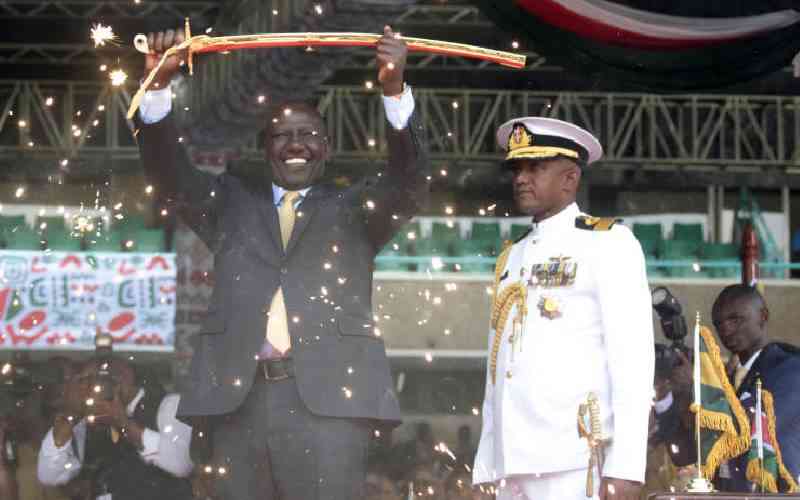The period for negotiation of the third-generation revenue sharing formula is finally here. While the last two formulae were discussed and approved without much fuss, the battle lines are already drawn for this third one. For those not in the know, horizontal revenue sharing between the 47 counties is based on a formula that is proposed by the Commission on Revenue Allocation and approved by Parliament every five years.
The first two formulae were to last three years each and the current one therefore comes to an end in the financial year 2018/2019. The current formula, which is up for review, divides revenue on the basis of four major parameters and two minor ones.
The largest consideration is population which accounts for 45 per cent of the basis for allocation. One of the challenges in this criterion is the accuracy of the population data. It is believed that some counties padded their numbers in the last census in anticipation of this criteria. While this is difficult to prove, it will be important that the next census contain sufficient safeguards against fraudulent number enhancement. Considering the dividends arising from false high populations, there is no doubt that padding will be extensively attempted.
There has also been extensive clamour, particularly from densely populated areas, for this component to be increased. While this demand is appreciated, and indeed some countries, population accounts for up to 60 per cent of the revenue sharing formula, one must then look at the other components of the formula and determine which one would need to be varied.
Costs of running services
The next highest consideration after population, is the equal share. The formula allocates 26 per cent of the revenue equally between all counties. The thinking behind this equal allocation is that there are certain costs of running services that are almost equal between counties. Naturally, this portion of the formula disadvantages some geographically large or populated counties as the cost of any service delivered by the latter will naturally be higher.
Poverty, which is a redistributive component of the formula, accounts for 18 per cent of the revenue allocation formula and is one of its more contested aspects. Statistics on poverty are heavily disputed. There have also been concerns that in the long term, the emphasis on poverty will become a perverse incentive, a reward for continued indigence. The proposal has been to continually reduce this criteria and replace it with elements that reward effort towards poverty alleviation. It is then proposed that other methods including the equalisation fund, which are time-bound, can be used to deal with marginalisation-based poverty.
Prejudicial impact
The final major consideration is land size. At 8 per cent, this aspect of the formula is heavily criticised by persons residing in densely populated areas. In their view, revenue allocation is about people, not land. What many people fail to see is that vast land sizes have a prejudicial impact on the cost of services to populations. It is less costly to provide water in a densely populated village than to small populations spread over hundreds of kilometres. In any event, the component of this aspect of the formula is very low, compared to others and addresses a real challenge. Two other small components, fiscal effort and development factor jointly account for the balance of three percent.
There has been a push to increase these two minor components particularly fiscal effort to encourage counties to use their resources well and to enhance their own source revenue collection. It is only right that counties that are prudent resource users and exploit their potential be rewarded as this increases counties’ fiscal independence.
While it may look like a small issue to some, it is heartening to see this portion of our development as a democracy at work, a place where rules, which we collectively negotiate, not politician’sunlimited discretion, determine rights to the nation’s resources. It will only be as we enhance this aspect of our democracy that elections will stop being the war they have historically been, as it won’t matter much to most of the population where the next Head of State comes from. That was the very reason we reviewed our Constitution.
- The writer is an Advocate of the High Court of Kenya
 The Standard Group Plc is a
multi-media organization with investments in media platforms spanning newspaper
print operations, television, radio broadcasting, digital and online services. The
Standard Group is recognized as a leading multi-media house in Kenya with a key
influence in matters of national and international interest.
The Standard Group Plc is a
multi-media organization with investments in media platforms spanning newspaper
print operations, television, radio broadcasting, digital and online services. The
Standard Group is recognized as a leading multi-media house in Kenya with a key
influence in matters of national and international interest.
 The Standard Group Plc is a
multi-media organization with investments in media platforms spanning newspaper
print operations, television, radio broadcasting, digital and online services. The
Standard Group is recognized as a leading multi-media house in Kenya with a key
influence in matters of national and international interest.
The Standard Group Plc is a
multi-media organization with investments in media platforms spanning newspaper
print operations, television, radio broadcasting, digital and online services. The
Standard Group is recognized as a leading multi-media house in Kenya with a key
influence in matters of national and international interest.








